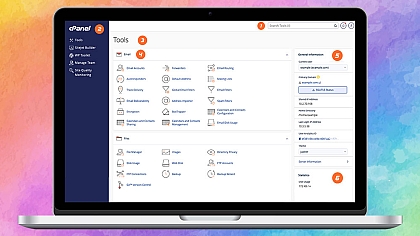
9 Principles of Successful Design Web Developers Should Know
Design plays a crucial role in the success of any product or website. As a developer, understanding the fundamental principles of design can greatly enhance your ability to create visually appealing and user-friendly experiences.
With the increasing emphasis on user-centric design, developers must not only focus on functionality but also create interfaces that are aesthetically pleasing and intuitive. The principles we will explore in this article provide a solid foundation for achieving these goals.
Whether you are an experienced developer or just starting, these principles will serve as a valuable guide on your design journey. You can hire an NYC web developer for professional services.
Throughout the article, we will discuss the importance of simplicity in design, the power of consistency in creating a coherent experience, and the need to prioritize user experience above all else.
We will also explore the concept of visual hierarchy and how it can guide users through your design, the significance of typography in setting the tone, and the effective use of negative space to enhance readability.
The 9 timeless principles of successful design that every developer should know. By following these principles, you will be able to create designs that not only look great but also provide an intuitive and engaging user experience. So let's get started!
9 Principles of Successful Design by NYC Web Developer
1. Simplicity is Key
One of the most important principles of successful design is simplicity. Keeping your designs clean and uncluttered allows users to focus on the content and functionality without unnecessary distractions.
By eliminating unnecessary elements and simplifying the overall design, an NYC web developer can create a visually pleasing and intuitive experience for their users.
2. Consistency for Coherence
Consistency in design is essential for creating a coherent and harmonious experience. Consistent use of colours, typography, icons, and layout helps users navigate and understand your interface more easily.
By establishing a consistent design language throughout your project, a web developer in New York can enhance user familiarity and reduce cognitive load.
3. Prioritize User Experience
The user experience should always be at the forefront of your design decisions. Put yourself in the shoes of your users and consider how they will interact with your design.
Ensure that your interface is intuitive, easy to navigate, and provides clear feedback. By prioritizing the user experience, an NYC Web developer can create designs that users will love to interact with.
4. Use Visual Hierarchy
Visual hierarchy is a powerful tool in design that helps guide users' attention and communicates the importance of different elements.
By using size, colour, contrast, and placement, an NYC Web developer can create a clear hierarchy that guides users through their design and emphasizes the most important information.
5. Pay Attention to Typography
Typography plays a crucial role in design, as it sets the tone and conveys information effectively.
Choose fonts that are legible and appropriate for your project. An NYC Web developer pays attention to font size, spacing, and hierarchy to ensure that your text is easy to read and visually appealing.
6. Embrace Negative Space
Negative space, also known as white space, is the space between elements in a design.
Embracing negative space can help create a sense of balance, improve readability, and highlight important elements. Don't be afraid to let your design breathe by incorporating ample negative space.
7. Use Color Strategically
Colour is a powerful design element that can evoke emotions and communicate messages.
Choose a colour palette that aligns with your brand or project and use it consistently throughout your design. Use colour strategically to create visual interest, highlight important elements, and guide users' attention.
8. Ensure Responsiveness
In today's mobile-driven world, designing for responsiveness is crucial. Ensure that your designs adapt and provide a seamless experience across different devices and screen sizes.
Web developers in New York test your designs on various devices and use responsive design techniques to optimize the user experience.
9. Iterate and Seek Feedback
Design is an iterative process, and seeking feedback is essential for improvement. Don't be afraid to gather feedback from users, stakeholders, and other designers.
NYC Web developers iterate on your designs based on the feedback received to refine and enhance the user experience.
Incorporating the 9 timeless principles of successful design into your development process can significantly enhance the quality of your designs. By embracing simplicity, consistency, and user-centricity, you can create visually appealing and intuitive experiences.
Embrace negative space, design responsively, and continuously iterate based on feedback. Mastering these principles will help you become a skilled Web developer in New York who can create designs that captivate and engage users.
Frequently Asked Questions (FAQs)
Why is simplicity important in design?
Simplicity is important in design because it allows users to focus on the content and functionality without distractions. It enhances the user experience and creates visually appealing designs.
How can I ensure consistency in my designs?
To ensure consistency in your designs, establish a design language and stick to it throughout your project. Use consistent colours, typography, icons, and layout.
Why is user experience important in design?
User experience is important in design because it determines how users interact with your product or website. Prioritizing the user experience helps create designs that are intuitive and easy to use.
How does visual hierarchy help in design?
Visual hierarchy guides users' attention and communicates the importance of different elements. By using size, colour, contrast, and placement, you can create a clear hierarchy that enhances the user experience.
Why is negative space important in design?
Negative space is important in design because it improves readability, creates balance, and highlights important elements. It allows your design to breathe and provides visual clarity.
How can I design responsively?
To design responsively, ensure that your designs adapt to different devices and screen sizes. Test your designs on various devices and use responsive design techniques to optimize the user experience.











